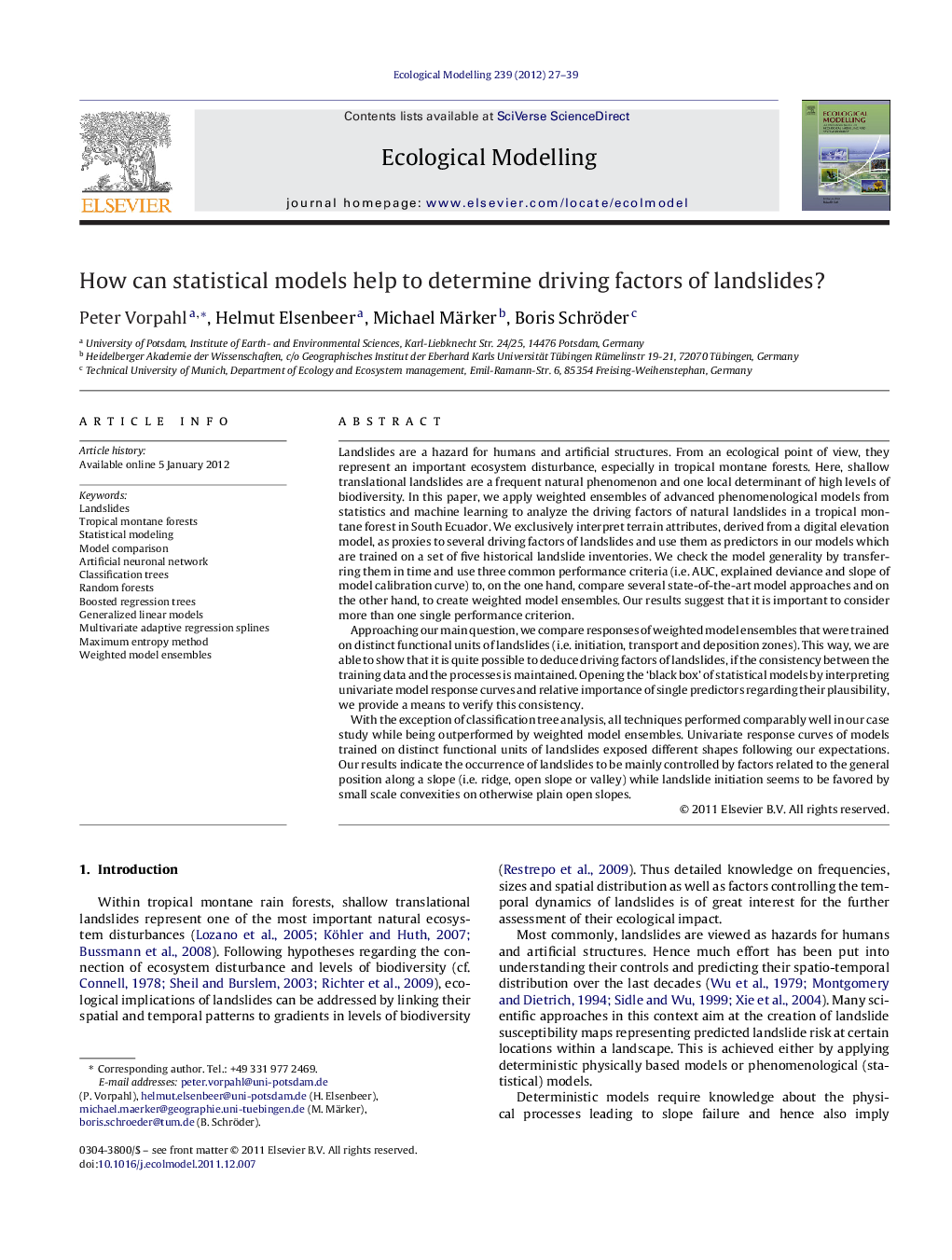| کد مقاله | کد نشریه | سال انتشار | مقاله انگلیسی | نسخه تمام متن |
|---|---|---|---|---|
| 4376437 | 1617506 | 2012 | 13 صفحه PDF | دانلود رایگان |

Landslides are a hazard for humans and artificial structures. From an ecological point of view, they represent an important ecosystem disturbance, especially in tropical montane forests. Here, shallow translational landslides are a frequent natural phenomenon and one local determinant of high levels of biodiversity. In this paper, we apply weighted ensembles of advanced phenomenological models from statistics and machine learning to analyze the driving factors of natural landslides in a tropical montane forest in South Ecuador. We exclusively interpret terrain attributes, derived from a digital elevation model, as proxies to several driving factors of landslides and use them as predictors in our models which are trained on a set of five historical landslide inventories. We check the model generality by transferring them in time and use three common performance criteria (i.e. AUC, explained deviance and slope of model calibration curve) to, on the one hand, compare several state-of-the-art model approaches and on the other hand, to create weighted model ensembles. Our results suggest that it is important to consider more than one single performance criterion.Approaching our main question, we compare responses of weighted model ensembles that were trained on distinct functional units of landslides (i.e. initiation, transport and deposition zones). This way, we are able to show that it is quite possible to deduce driving factors of landslides, if the consistency between the training data and the processes is maintained. Opening the ‘black box’ of statistical models by interpreting univariate model response curves and relative importance of single predictors regarding their plausibility, we provide a means to verify this consistency.With the exception of classification tree analysis, all techniques performed comparably well in our case study while being outperformed by weighted model ensembles. Univariate response curves of models trained on distinct functional units of landslides exposed different shapes following our expectations. Our results indicate the occurrence of landslides to be mainly controlled by factors related to the general position along a slope (i.e. ridge, open slope or valley) while landslide initiation seems to be favored by small scale convexities on otherwise plain open slopes.
► We provide a framework to train, test and compare landslide susceptibility models.
► The use of multiple quality criteria is mandatory for model comparison.
► Weighted ensembles outperform eight state-of-the-art methods in our case study.
► Maintenance of consistency between training data and processes is important.
► Model responses differ for distinct functional units of landslides.
Journal: Ecological Modelling - Volume 239, 24 July 2012, Pages 27–39